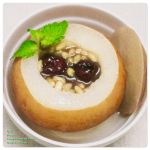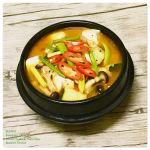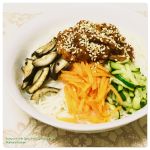Hansik, An Energy Source Filled with Philosophy and Science
Korean food is a great source of energy, and for Koreans, energy goes beyond physical strength, it pertains to strength of the mind and soul. Traditional Korean wisdom says that “food and medicine are grown from the same root,” therefore “there is no better medicine than food.” These long-standing traditional beliefs show how important food is to the physical and emotional well being of the Korean people.
Yin, Yang and the Five Elements
The principles governing yin, yang and the five elements explain how all things in nature grow and develop on the basis of mutual interactions. Opposing yin and yang forces explain how heaven and earth are formed. These twin energies also create the five elements: wood, fire, soil, metal and water. There are also five cardinal colors – blue, red, yellow, white and black – that correspond to the five basic elements. Colored ingredients are blended to produce foods that allow the body to efficiently absorb nutrients and to stimulate the appetite through the five essential tastes: salty, hot, sweet, bitter and sour.
Food Harmony
When different foods harmonize, they strengthen and even increase each other’s efficacy as well as curb toxicity. The ginseng in samgyetang (ginseng chicken soup) relieves stress during the heat of summer, and the se-ujeot (salted shrimp) that is served with bossam (steamed pork with vegetable wraps) is known to break down fat.
Fermentation Improves Taste and Nutrition
Fermentation is a critical part in discussing the scientific aspects of Korean food. Good bacteria from natural ingredients helps the fermentation process so that the nutritional value of the food is enhanced.
Write up adapted from Han Bok-ryeo, Director, Institute of Korean Royal Cuisine
- https://marinaohkitchen.wordpress.com/2017/02/24/dak-galbi-stir-fried-spicy-chicken-with-vegetables/
- https://marinaohkitchen.wordpress.com/2017/07/18/oksoosoo-chopssal-hotteok-sweet-rice-corn-pancakes/
- https://marinaohkitchen.wordpress.com/2017/09/16/gochujang-gaji-jjim-spicy-stuffed-steamed-eggplant/
- https;//marinaohkitchen.wordpress.com/2017/09/30/ojingeo-twigim-fried-dried-squid/














































































































































































